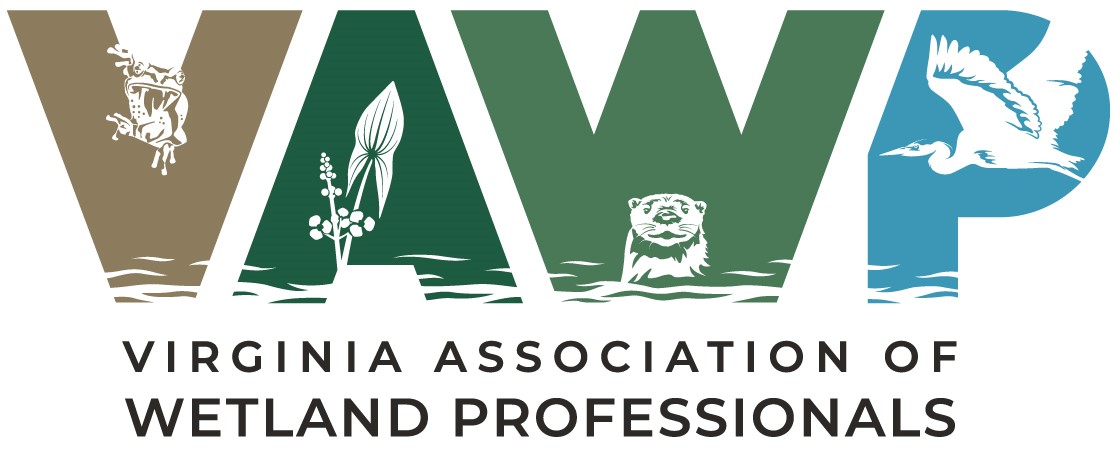Virginia’s coastal marshes are at risk of drowning due to rising sea levels as a result of both climate change and subsidence from groundwater extraction. VAWP 2024 Scholarship recipient Caitlin Hemphill’s research is looking at thin-layer placement (TLP) as a possible restoration technique for coastal salt marshes. A TLP is a thin layer of beneficial dredge or sediment applied to a salt marsh with the expectation of vegetation growing through or recolonizing the newly applied sediment. This small increase in marsh height can buffer the marsh against rising sea levels.

Her research is specifically evaluating the effect of different sediment compositions on plant regrowth and marsh height. The experiment has both a field component and a greenhouse component. The main field component is at First Landing State Park in a low-lying coastal salt marsh (seen in the 2nd picture). Plots were given an addition of 5cm sediment—either locally collected mud or a 1:1 ratio mix of mud and sand—at the beginning of the growing season. A secondary field site was recently established at Elizabeth River Project’s Ryan Resilience Center in Norfolk (seen in the 1st picture), where plots are set up in a newly restored shoreline and given an additional 5cm of sand.

The greenhouse experiment is set up in large tanks that have been modified to mimic natural conditions found in salt marshes in the southern Chesapeake Bay (seen in the 3rd picture). Planters with either salt marsh cord grass (Spartina alterniflora) or black needlerush (Juncus roemarianus) were placed in the tank and 5 cm of additional sediment—local sand, mud, or a mix—were placed on the planters’ soil surface.
The plants’ height, diameter, and percent cover, as well as sediment height are being measured until the fall. Findings are planned to be presented at a future VAWP conference. Caitlin is hoping this data will be useful for costal restoration practitioners and encourage more conversations about TLP in Virginia.
Caitlin is currently pursuing her master’s degree in biology at Old Dominion University in the Coastal Plant and Ecotone Ecology Lab. She has a B.S. in Wildlife Conservation from Virginia Tech and has held positions at Wetlands Studies and Solutions, Inc., California Department of Water Resources, and Montana Natural Heritage Program. She also is currently collaborating with Elizabeth River Project to run a pilot TLP project on their newly restored shoreline.

